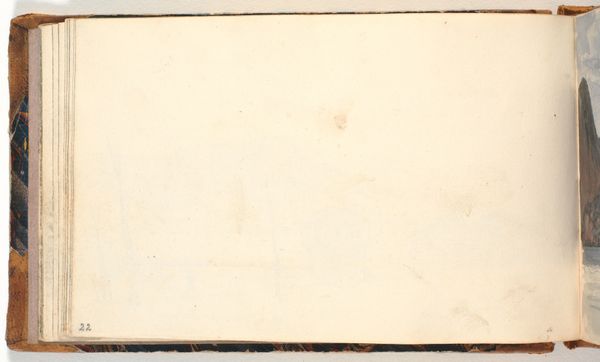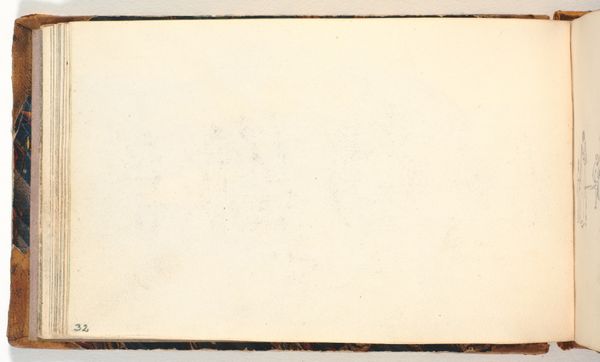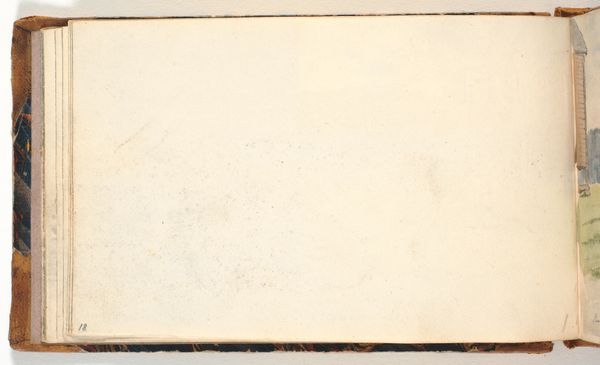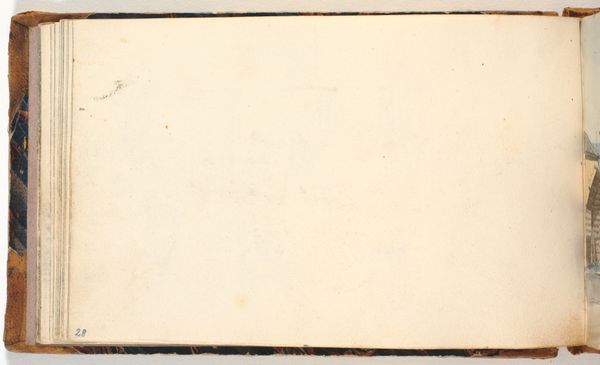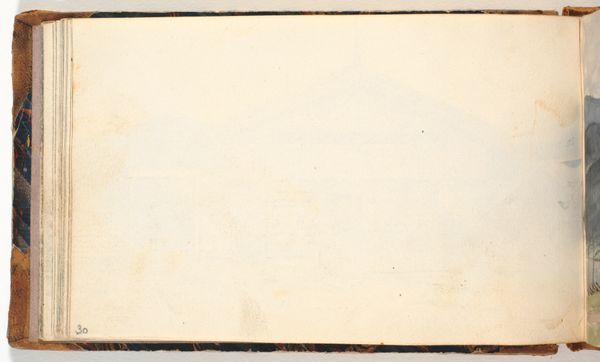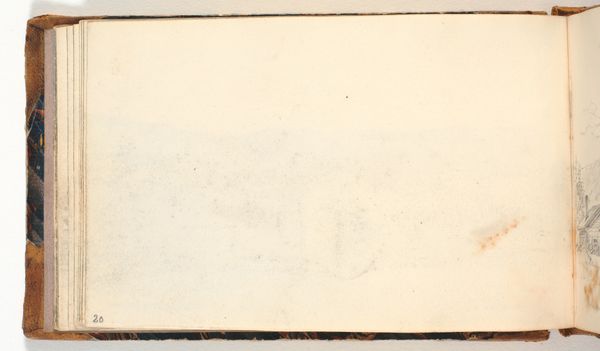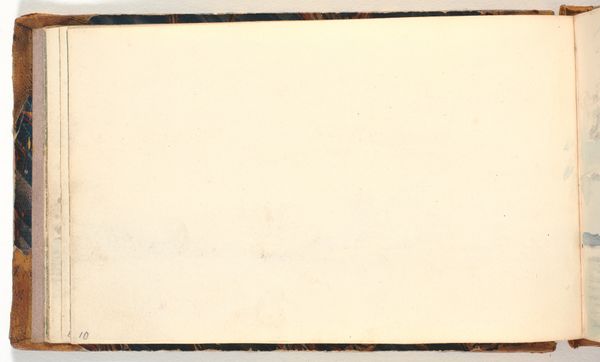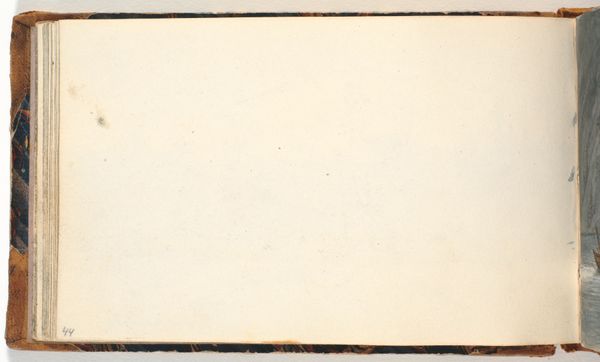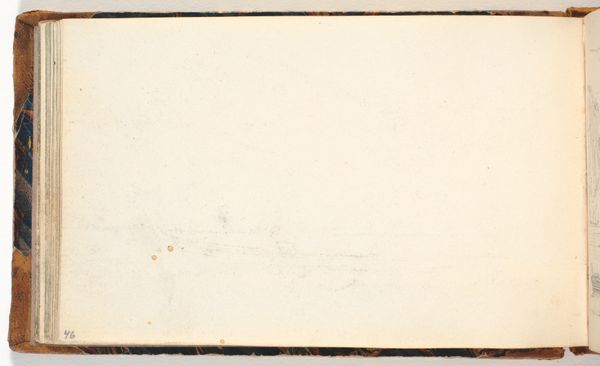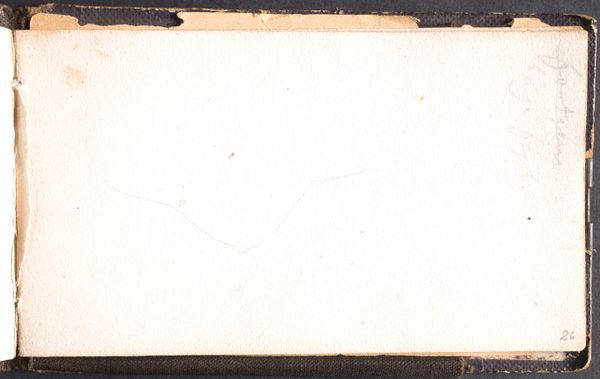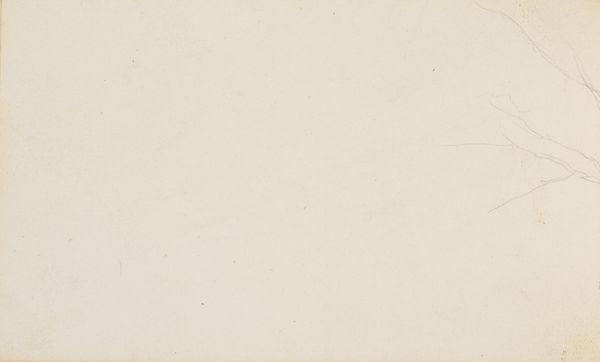
drawing, paper, watercolor, ink, pencil, pen
#
portrait
#
drawing
#
paper
#
watercolor
#
ink
#
romanticism
#
pencil
#
pen
Dimensions: 107 mm (height) x 179 mm (width) (bladmaal)
Curator: At first glance, this page from a sketchbook seems rather unremarkable, even disappointing perhaps. The title itself is "Blank," created in 1832 by Martinus Rørbye and held at the SMK, the National Gallery of Denmark. Editor: Disappointing isn't quite the word I'd use. There is a quiet invitation here, like an expectant stage waiting for its drama. The warm, creamy tone of the aged paper and the slight staining along the edges speak of history and hidden narratives. Curator: That’s interesting. What kind of symbols do you glean from its emptiness? The Danish Golden Age in art, of which Rørbye was a part, had strong nationalist underpinnings and embraced genre painting of everyday life. Could this blankness then, signify something about societal anxieties or creative blockage? Editor: I don't see blockage, but I definitely perceive anticipation. Paper is innately symbolic; a tabula rasa promising stories untold, adventures unwritten. The slight undulations in the paper speak to the physical process of bookmaking and suggest that human interaction with these pages already happened, that maybe the content holds less weight than the potential this opened book once suggested. Curator: It makes you wonder what else Rørbye sketched in this very notebook, doesn't it? As a chronicler of his time, what narratives were captured in sequence with this “blank” page and subsequently lost? Or purposefully omitted? What societal commentary could he make through deliberate absences within his other vivid travel sketches? Editor: Indeed. Perhaps the point *is* that there's no explicit symbol to be found here. Maybe Rørbye intentionally offered space for the viewer's projections, a mirror reflecting our individual hopes, fears, and creative longings onto a seemingly simple page. In an era defined by revolution and changing social structures, leaving it blank might even stand as a deliberate statement, freeing space for imagination rather than prescription. Curator: I am intrigued by how something apparently simple can resonate with such nuanced potential depending on perspective. I came to the drawing initially focusing on its sociopolitical contexts, and I leave reminded to remember the intimacy an artist also establishes with its audience through absent narratives. Editor: Exactly. In a sea of visual noise, sometimes the loudest statement is the one unsaid, reminding us to locate meaning within ourselves and each other rather than just accepting ready-made icons.
Comments
No comments
Be the first to comment and join the conversation on the ultimate creative platform.
